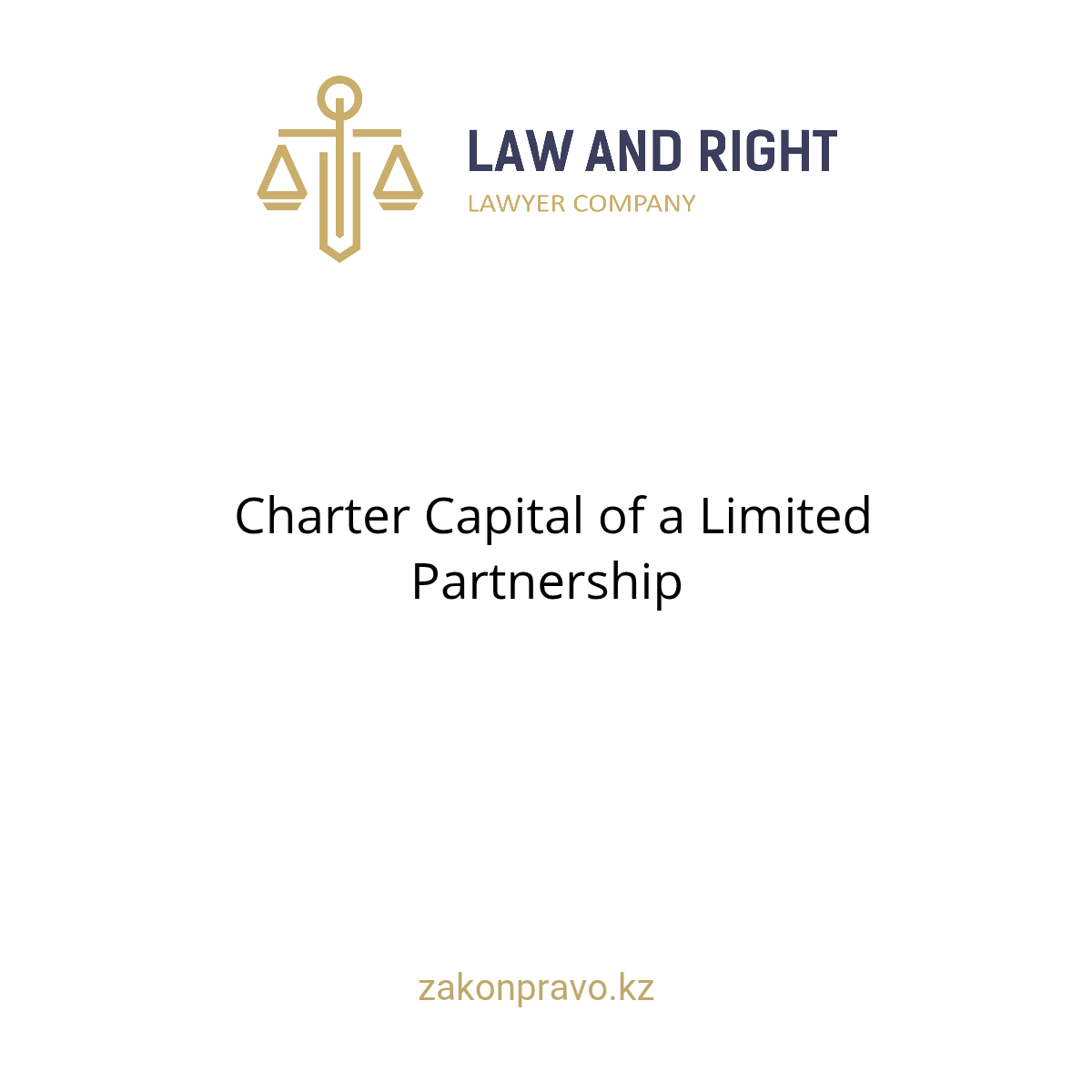Charter Capital of a Limited Partnership
📘 I. General Characteristics of the Charter Capital in a Limited Partnership
The charter capital is the property basis of a limited partnership (LP) expressed in monetary form, ensuring:
- liability to creditors;
- distribution of shares and profits;
- guarantee of property participation of general partners;
- the ability to record the amount and changes in the state register.
⚠️ In a limited partnership, the charter capital is divided into two levels:
- the share of general partners (active managers);
- contributions of limited partners (silent partners), which are not considered in the management share calculation but are included in the total assets.
📑 II. Commentary on the Provisions of the Article
🔹 Paragraph 1. Composition of Charter Capital and Property Share
“The charter capital of a limited partnership consists of contributions of its participants…”
- The charter capital includes all contributions: both from general partners and limited partners.
- However, the share of general partners in the property is calculated without taking into account the contributions of limited partners, highlighting the limited participation of the latter.
📘 Practical Importance:
- In cases of asset distribution, liquidation, or bankruptcy, limited partners have no priority rights to asset management.
📌 Example: In the case of dividing the assets of LP "Agro-Invest," the court denied the limited partner’s request for a share in real estate management, as their contribution does not affect decision-making or management rights.
📎 Related Provisions:
- Article 69 of the Civil Code of the Republic of Kazakhstan (RK) – property contribution;
- Article 73 of the Civil Code – rights of a limited partner;
- Article 70 of the Civil Code – powers of general partners.
🔹 Paragraph 2. Minimum Size and Authority Over Charter Capital
“The size of the charter capital is determined by the general partners…”
- Only general partners have the right to determine and change the charter capital.
- A minimum threshold is set, which cannot be below the minimum established by industry-specific legislation.
📘 Sectoral Exceptions:
- Microfinance organizations – regulated by the Law of the RK "On Microfinance Activity" (Art. 6);
- Debt collection agencies – regulated by the Law of the RK "On Collection Activity" (Art. 10).
📌 Example: According to Article 6 of the Law "On Microfinance Activity," the minimum capital requirement for microfinance organizations is 100 million KZT (as of 2024 — subject to current legislative updates).
🔹 Paragraph 3. Reduction of Charter Capital – Protection of Creditors
“Reduction of the charter capital is permitted after notifying all creditors…”
Key legal implications:
- Requirement to notify creditors – ensures transparency and protects good-faith contractors;
- Creditors’ rights to early fulfillment and compensation – a mechanism to prevent dishonest reduction of capital;
- Violation of procedure – grounds for court-ordered liquidation.
📌 Legal Position of the Supreme Court:
In the Review of Judicial Practice on Bankruptcy and Liquidation of Business Entities (Regulatory Resolution of the Supreme Court of RK No. 1 dated 27.06.2003), it is stated:
“Concealing the reduction of charter capital from creditors is considered abuse of rights and may result in compulsory liquidation at the request of interested parties.”
📎 Related Provisions:
- Article 49 of the Civil Code – grounds for termination of participation in a partnership;
- Article 50 of the Civil Code – liquidation of a legal entity;
- Law of the RK "On State Registration of Legal Entities" – mandatory registration of capital changes.
⚖️ III. Comparison with International Practice
| Country | Approach to Charter Capital |
|---|---|
| Germany (HGB) | Determined by general partners; minimum based on industry |
| France | Capital social determined by managing partners |
| United Kingdom | No mandatory minimum for LPs, regulated by the FCA in finance sector |
| USA | Most states do not require formal charter capital; governed by agreement |
🔍 In Kazakhstan, charter capital serves not only an economic function but also a legal-registration role, especially in licensed sectors.
📚 IV. Related Articles and Laws
| Provision | Content |
|---|---|
| Article 69 of the Civil Code | Procedure for making contributions |
| Article 70 of the Civil Code | Liability of general partners |
| Article 73 of the Civil Code | Rights of limited partners |
| Articles 49–50 of the Civil Code | Termination and liquidation |
| Law "On State Registration of Legal Entities" | Registration of changes in charter capital |
| Law "On Microfinance Activity" | Article 6 – capital of MFIs |
| Law "On Collection Activity" | Article 10 – capital of collection agencies |
📝 V. Recommendations and Conclusions
- The definition and change of capital is the exclusive competence of general partners;
- Limited partners do not participate in this process, which aligns with their passive role;
- When changing the charter capital, it is necessary to:
- officially notify all creditors;
- register the changes with the justice authorities;
- consider special industry requirements (MFIs, collectors).
Attention!
Law and Law Law Law draws your attention to the fact that this document is basic and does not always meet the requirements of a particular situation. Our lawyers are ready to assist you in legal advice, drawing up any legal document suitable for your situation.
For more information, please contact a Lawyer / Attorney by phone: +7 (708) 971-78-58; +7 (700) 978 5755, +7 (700) 978 5085.
Attorney at Law Almaty Lawyer Legal Services Legal Advice Civil Criminal Administrative Cases Disputes Protection Arbitration Law Firm Kazakhstan Law Office Court Cases


